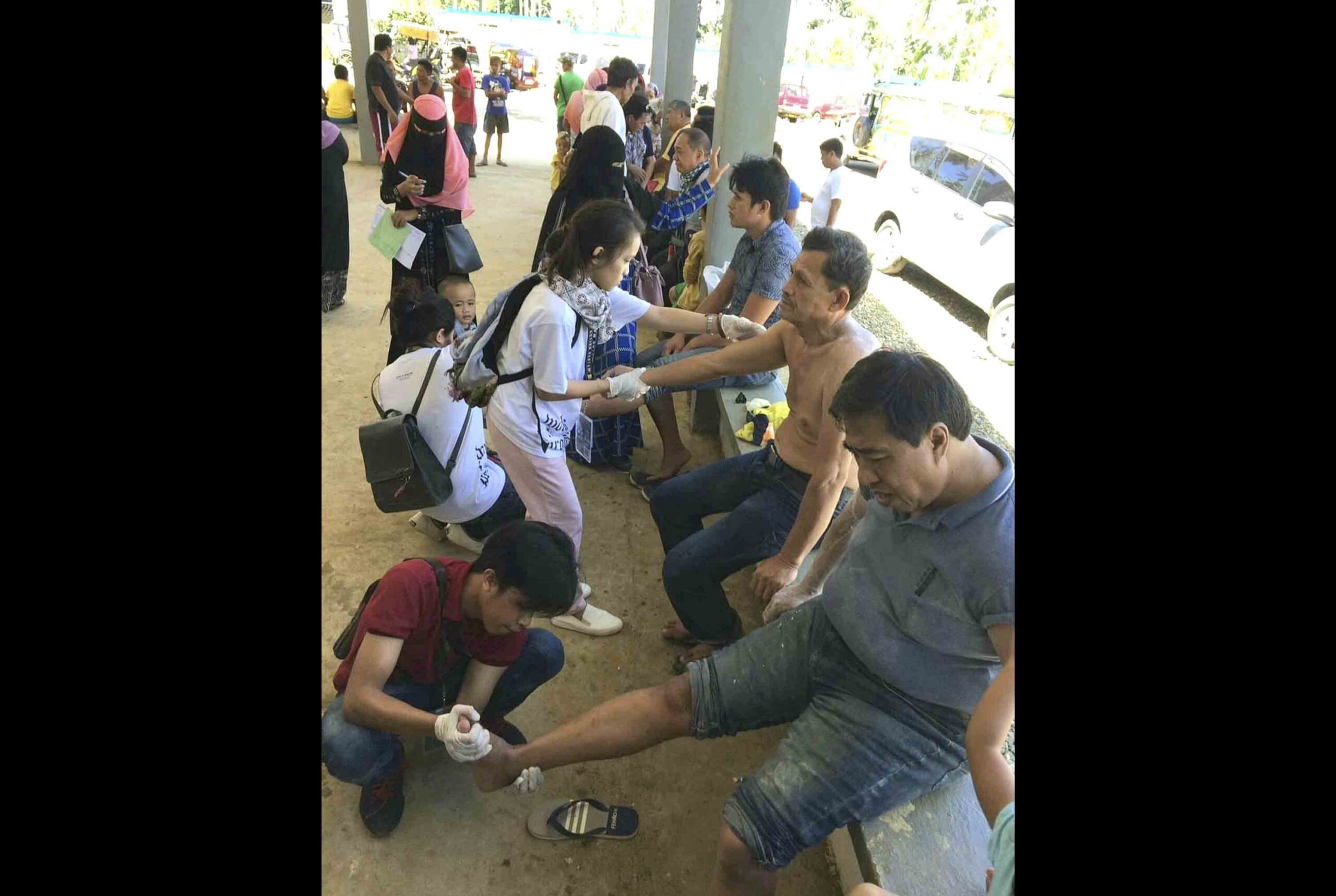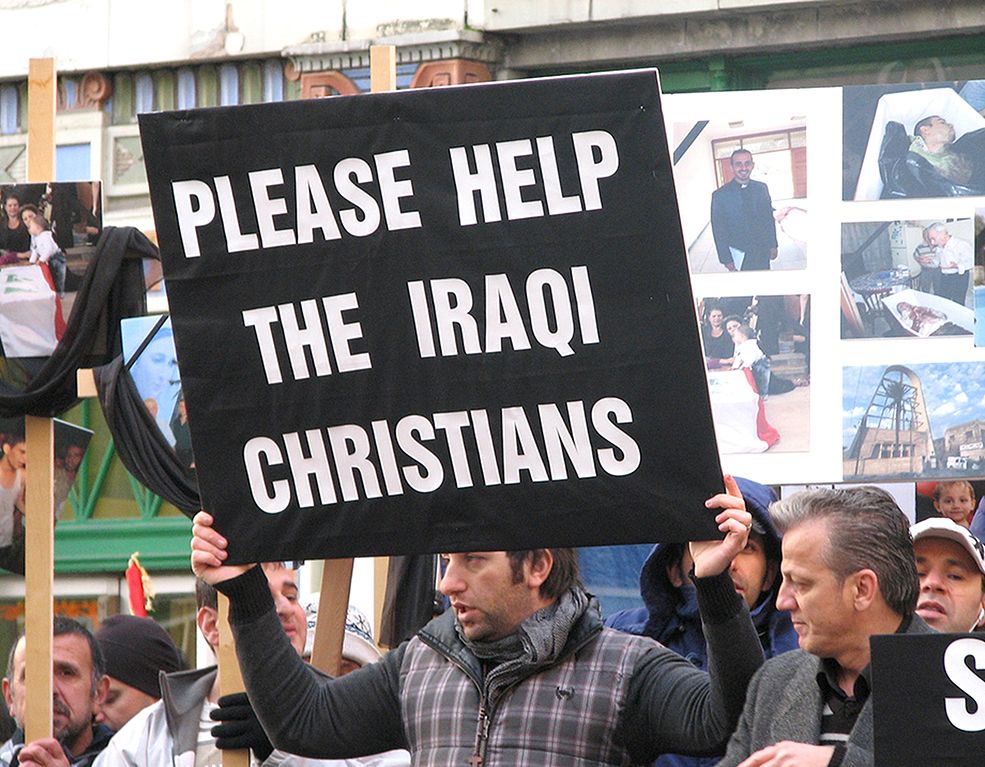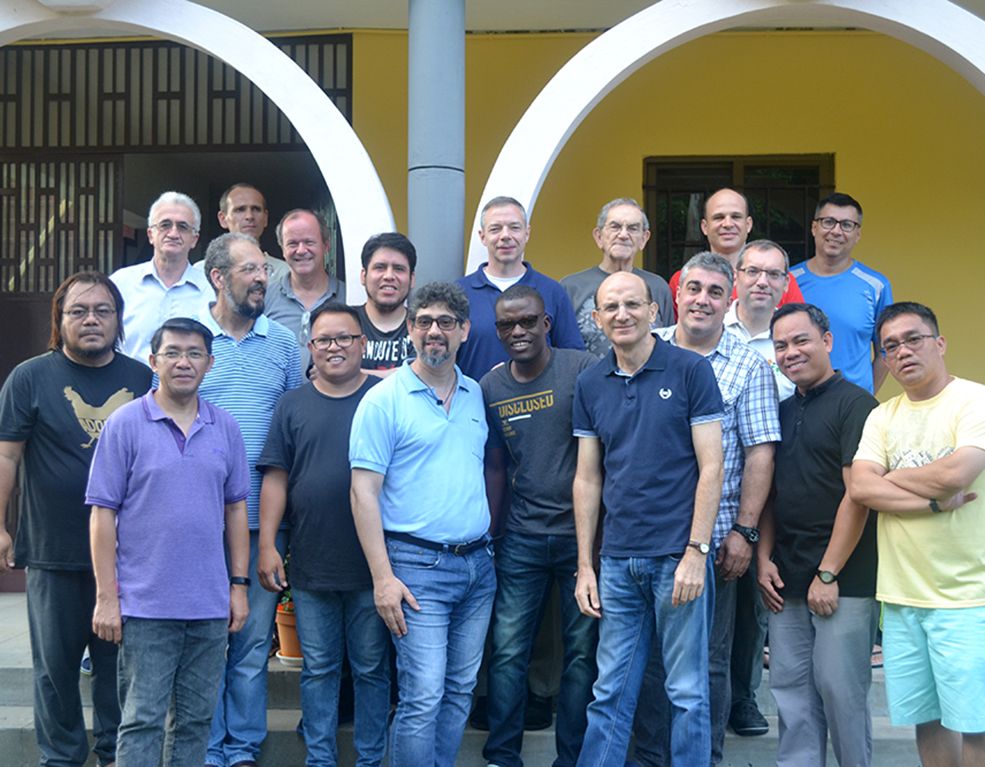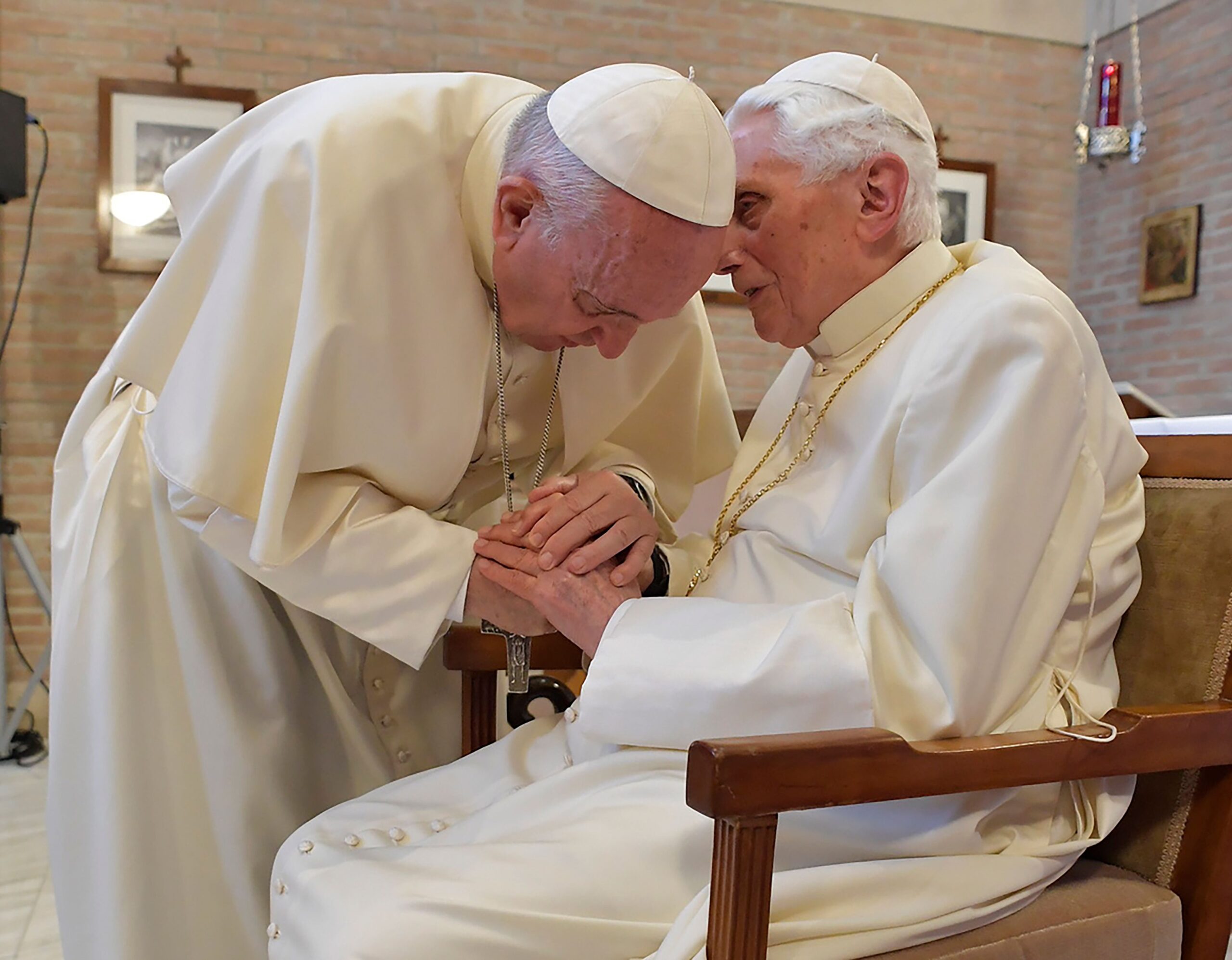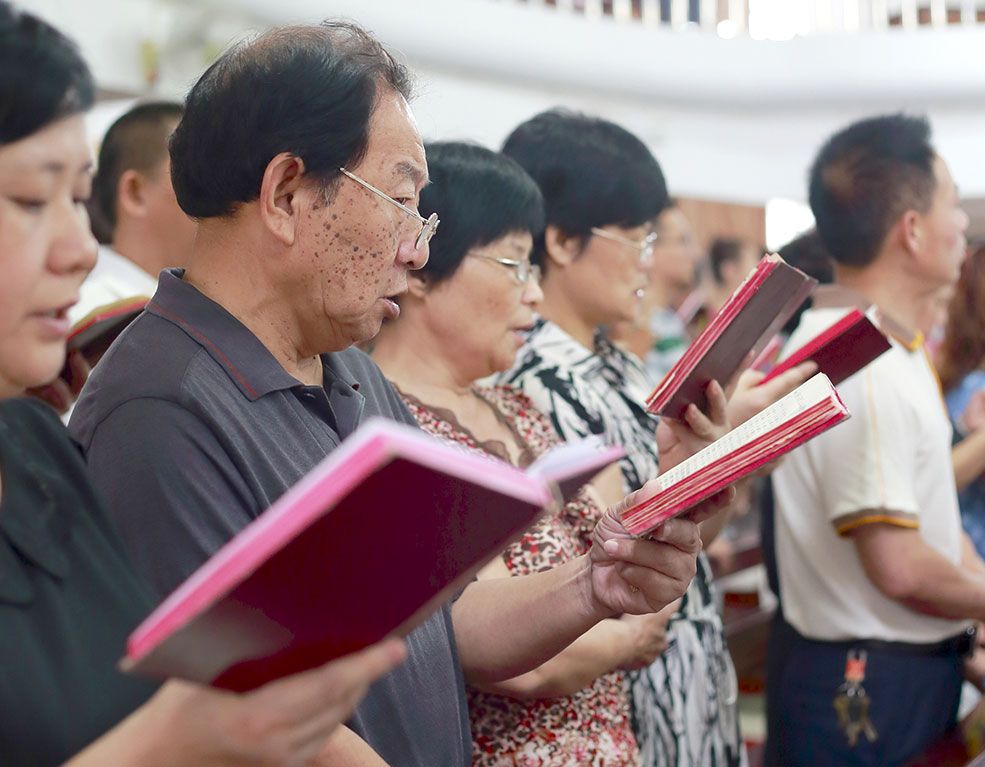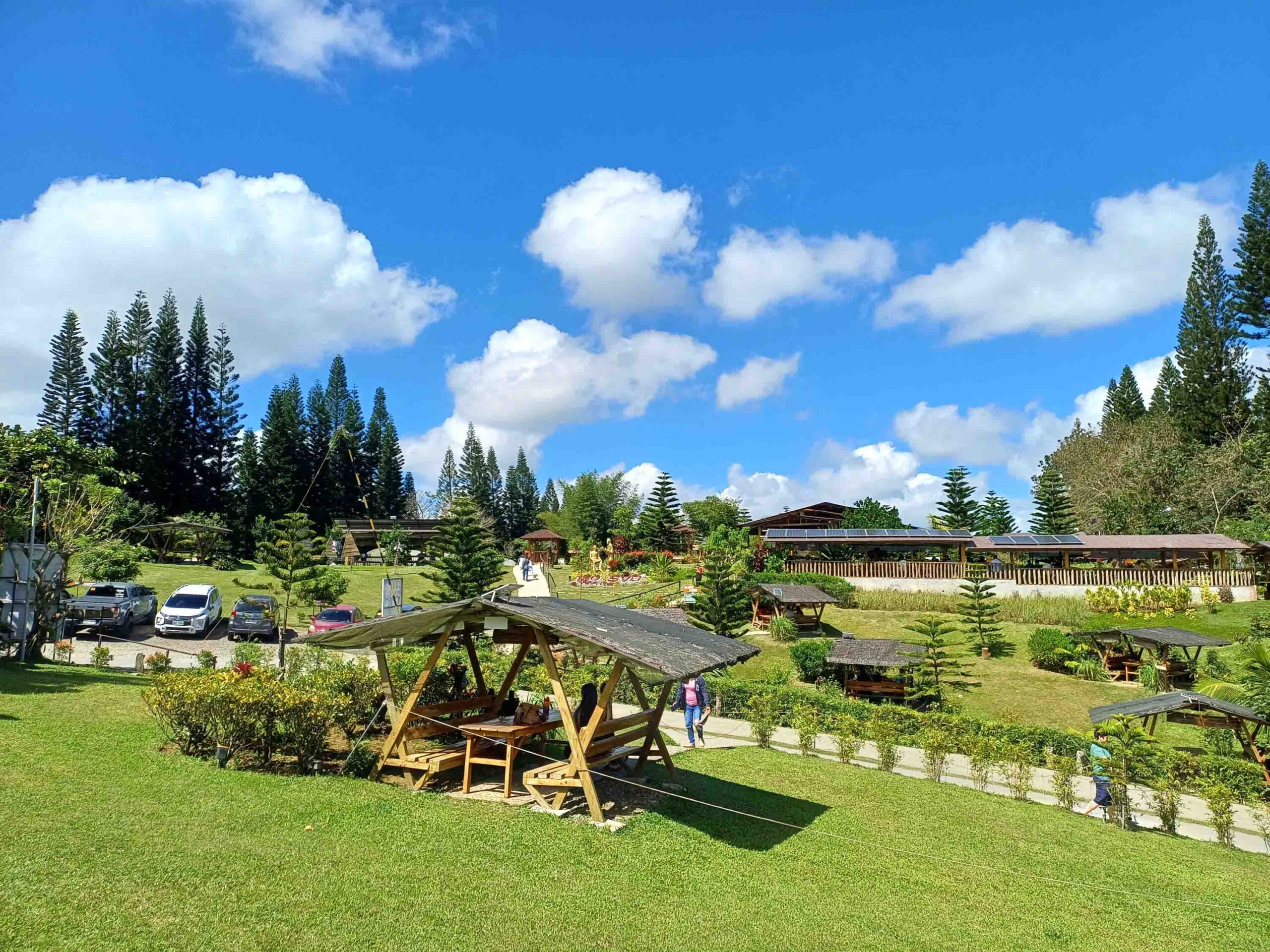When Comboni Missionary Giuseppe Franzelli, a native of Roccafranca, Italy, was told that Pope John Paul II wanted him to be a bishop in Uganda, his immediate response was, “No. Get somebody else.” If being a bishop is always a cross, he reflected, the situation in Lira, Uganda, would be even more difficult as the nation strained through a conflict with the Lord’s Resistance Army and the unimaginable atrocities wreaked on the people, even the children.
But Bishop Franzelli’s appointment came as John Paul II was dying. It was published in L’Osservatore Romano on April 1, 2005 – he sees it as a sort of April Fool’s Day joke from the Pope. The next day, in the evening, the Holy Father would die. Looking at the dying Pope, “carrying the cross for the whole universal Church,” the missionary reflected, “how could I say no?” And “the reality proved that it was not just a cross but it continues to be a cross,” the 68-year-old bishop explains.
Was it always a desire of yours to be a missionary?
– Well, I was prompted to that by a young missionary who was going around the parishes and showing us slides and this kind of thing.
And it awoke this sense of adventure in your mind. Did you have a sense of calling at that age?
– Yes, and it developed – of course, with doubts as I went along – but then it was quite strong. That is why I’m here.
Did you have any ideas and pre-conceptions about Africa?
– Only the usual, if you want, the romantic ideas at that time: lions for me as a child, and then the Africans, the slavery thing that I’ve read about and all the rest, and definitely poverty and people in need of knowing the Gospel.
You were made a bishop by Pope John Paul II and in fact, your appointment was made before the day he died. What is the significance of this appointment?
– It was a great surprise and a big shock to me and, to be honest, I didn’t want it, absolutely not, and I tried even to resist it. I was appointed by him and it was published in L’Osservatore Romano. It was done on the first of April, that’s April Fool’s Day, that is why I consider it as a kind of a joke that the Pope did to me and 17 others who were made bishop. The nomination was published in the afternoon of April 1, 2005, in L’Osservatore Romano, which was dated on the following day, April 2. That evening, the Pope died.
When I was called to Sacra Congregatio Propaganda Fide (the Congregation for the Evangelization of Peoples) for discussing things, it was Cardinal [Crescenzio] Sepe who broke the news to me. I said, “No, get somebody else” and so on. Eventually, the Pope came into it in the sense that, first of all, the Cardinal told me that he [the Pope] has agreed and wants this. I was looking at the Pope and saying to myself: “He is very sick. He is carrying the cross for the whole universal Church, so you better accept and help carry the cross for the Church.” Well, I could no longer say “no” as a witness to the Pope and utter love for the Church. So that is what my being made bishop meant to me.
It was a heavy cross for you to accept this appointment. What were the changes and how is it a cross for you?
– Being a bishop is a cross. Being associated closely with the work of Jesus entails and must entail carrying a cross with Him. The little I knew about the situation down there (in Lira) was that it was a particular situation, an emergency situation. As a matter of fact, I’m the third bishop of that diocese and the first white bishop of the diocese. There were problems that required someone from the outside to come in and help with the situation. I had never been to Lira myself. I’d only passed through it in my first 17 years in Uganda from 1971 to 1987 to work mostly in the Gulu Archdiocese. I knew nobody [and] in Lira nobody knew me. So it was a big challenge. The reality proved that it was not just a cross but it continues to be a cross but, of course, that is part of the job; part of the package.
Don’t worry, God is there
You arrived, as you say, in an emergency situation in 2005, at the height of the civil war with the LRA, the Lord’s Resistance Army. Now there is a tentative peace agreement in place but, at that time, the LRA was the devil in action. It was a cruel and bitter war. Can you tell us a bit of a background about this civil war and the emergence of the LRA?
– It didn’t start out of nothing. When I was there during my first years in Africa – when the present President Museveni took over the power from General Okello – there was already this movement by the prophetess Alice Lakwena, who purported to be inspired by the Holy Spirit to resist and fight the government. I experienced that because the mission where I was located became a battlefield literally; people were fighting each other and people being killed in front of me. So that was the beginning. When Alice Lakwena was defeated and said to have fled to Kenya, Joseph Kony took over the leadership with the idea to start a new society in Uganda based on the Ten Commandments, but they forgot and ignored very quickly the fifth commandment – Thou shall not kill – among others. This was a kind of fundamentalist belief mixed with traditional beliefs and anointing people with this kind of oil and making them believe that this will protect them from the bullets.
Exactly… they were smeared with some kind of oil, with the saying that bullets would bounce off them.
– Yes, but then it became obvious to them that fighting a well-organized army was very difficult so they turned against their own people. They would come to the villages and coerced the villagers to join them. The villagers, of course, would not join. Even their own family – brothers and sons – refused and this ignited a reign of terror. Anyone, even close family members who refused to join the rebels were maimed, body parts amputated; atrocities unimaginable even among the traditional African values. There was a reign of terror forcing the people to leave their villages giving rise to this phenomenon of “child soldiers,” village children being abducted and forced to fight. About 15,000 to 20,000 children have been abducted for the past 20 years. The children were abducted, taken to the bush and trained to kill. Those who tried to escape were killed – forcibly by their own brothers or friends.
Was this for you the devil in action?
– We do believe in the Holy Spirit but He is not the only spirit that exists in the world, so the evil one is also there. He [the evil one] uses people, of course, and from a human point of view, this was so beyond understanding and comprehension that one cannot simply accept it.
One cannot imagine it. Did it test your faith to see this inhumanity?
– When I see people being killed or tortured, I think of Jesus when He was crucified and said: “Father, why have you abandoned … forsaken me?” Everybody’s faith will certainly be tested when one witnesses people suffering a lot. There is a place near Lira, Barlonyo, where the rebels came wearing government-issued military fatigues so the villagers were caught off guard. The rebels killed over 300 of the villagers – civilians, women and children. When you see something like this, you wonder why.
Were you ever threatened or even put in danger?
– I myself was never in danger because I came later. I was, however in the first war, shot at and so on. Our mission, as I said, was the battlefield. For this latest event, I personally was not here, but I have been in touch with people who mourn their dead. And when you see so many orphans, people who have lost everything, people who have left their homes because of terror and now stay in displaced people camps – which I call concentration camps where 5,000 to even 30,000 people are confined in a small space, where promiscuity is rampant and the danger of AIDS is apparent; and when the army that is supposed to provide the security are themselves the abusers – all of these certainly make one think and ponder. I remember, one day, taking somebody from Germany to one of these camps. It was only a few-minute visit and Easter was upon us. At the end of the tour, this man said: “Bishop, in a few days it will be Easter. What are you going to tell the people? What Easter is this? Where is God?”
And I answered: “Yes… look, look, God is here crucified with them. Close to the camp we have built a chapel where the Eucharist is kept. So, He is here with them. They sleep in the chapel and He is with them.” The resurrection is coming but then, of course, this tests your own faith and I was really edified by my own people.
In what sense?
– Well, for their endurance, for their faith… I remember, as I was leaving that camp, there came a young lady with three children – triplets – whose husband was killed before she gave birth; nobody else was there and she told me when I tried to encourage her: “Bishop, don’t worry. God is there.”
Underdevelopment and lack of opportunities
Today, is there officially a peace agreement in place in Uganda?
– The peace talks started in 2006 and that was the beginning of the change because part of the agreement as things were proceeding was that the rebels would stop attacking and the army would stop running after them. So little by little the rebels retreated to a forest area close to the Congo border. The attacks and abductions of children diminished and actually stopped, giving us a bit of a breather and people were able to get out.
Now people are coming back to their homes.
– Yes, but the problem is that all the points in the peace agreement were agreed upon between the representatives of the rebels and the government at a neutral area in Juba in southern Sudan, with the mediation provided by the civil society, the Church, particularly Archbishop [John Baptist] Odama of Gulu played a very important role. Also, the other Protestant bishops, as well as the representatives from the highest level of the Muslims. The last thing that was missing was the signature, on the document, of President Museveni and the rebel leader, Joseph Kony. This was the day after Easter 2008. We went to Juba, waited a few days but we received a message that Joseph Kony was not coming to sign because there was a warrant for his arrest issued by the International Criminal Court (ICC), from The Hague.
So is he in the bush somewhere?
– He is in the bush so we agreed that we would go to him so that he could sign the document. We went back to Uganda with all the parties but he did not appear. After that, we gave it more effort and agreed, after a few more times, on a date but, still, he never appeared.
So, today, it is still tenuous.
– No. After that, there have been some new developments: While the chiefs from the different tribes and the religious leaders were insisting that if there is more time and patience, maybe a peace agreement would be achieved. All of a sudden, on Dec. 14, 2008, a combined military effort among the Ugandan Army, Congo and Southern Sudan occurred. They bombed the rebel stronghold and since then the rebels were weakened and were dispersed. The rebels’ fourth in command was taken prisoner. Since then, what was supposed to be a military strike – [Operation] Lightning and Thunder – is still going on resulting to more than 900 civilians killed. In Congo, where the rebels retreated, 130,000 people have been displaced in Southern Sudan.
But the root problem is still there…
– The root problem is still there but we are, up to now, living in peace because the rebels are so far away from us that they can no longer attack us. But the question is, even if the military operation is successful, do the government and those in authority realize that that does not end the problem? They have to address the problem of underdevelopment and lack of opportunities in the northern part of Uganda and this is going to be difficult.
The challenge of reconstruction
Nevertheless, the Church is in a situation now confronting the remainders and the result of this bloody upheaval. You have 20,000 children, for example, that have been psychologically damaged, traumatized and you have displaced people. What can the Church do in this period of restoration and rebuilding to help the people, particularly in your diocese?
– The children who were abducted and conscripted to fight are no longer children. While a few of them have been killed during the military operation, some have come back and the big concern is the issue of the displaced people. There has been a change since the beginning of the peace talks and after. Although people have started coming back to their homes, particularly in my Diocese in Lira, in the Gulu Archdiocese among the Acholi people, half of them are still in the camps. The other half are back but no homes to return to because, after all these years, their homes have been damaged. So we are faced with various challenges such as accompanying our people who are really alone and without any means to start all over again; rebuilding churches, schools, health centers; cultivating lands and so on. Although these are all big challenges because of financial and personnel constraints, probably the most difficult challenge is the rebuilding of people from within and also giving them hope. There is a high rate of suicide in the camps not only among the elderly, who are desperate that they could no longer go back to their ancestral home, but also among the young people…
What is the future?
– The young people who are back to school have, for a very long time, been internalizing their anger and have become very violent. Most of these young people were involved in violent acts themselves and with so much anger, they manifest these in their actions. For example, if there is a problem in the school, the aggrieved youth immediately respond with violence as opposed to using the traditional African method which involves a peaceful resolution by coming and sitting together to discuss the issue. Their psychological and physical trauma will take time to heal.
Starting with the Bible
How do you heal these young children who have been traumatized? Where do you start? These children, who at the age of 10 or 12, were given a gun and were obliged to kill relatives and so on?
– These are my questions as well. I’ve been talking to two of these “child soldiers” who came back. They were three brothers who were abducted. One of the brothers tried to escape but was caught. The two brothers were forced to kill him. So, where do you start? This would require a massive counseling; everybody is traumatized. We do not have the means and personnel for that. So what we are trying to do is to have the Bible translated in the local language. I go around to the different parishes with my Bible. It’s like “sowing” once again the Word of God and the peace of reconciliation. I believe this will bring results.
After so much violence, are the people open to the Word of God? Are they open to the Gospel? Are they open to the Holy Spirit to heal them and their relationships?
– There is, of course, some resistance; there is nothing automatic. But I’ve seen changes happening. The Spirit is at work but, of course, it needs time. It also needs clergy, and religious people who are faithful to their vocation and are witnesses of their faith. It needs more unity and communion within the Churches, between the different dioceses within Uganda, north and south. The challenge is there and as the mother of the three boys told me: “God is there.”
What do you need from the universal Church?
– I always ask people to pray, and faced with these problems, I see the frequent reaction of people: The problem is overwhelming. People ask: “What can we do?” They feel so small that they cannot do anything. They feel they can only provide financial support but that isn’t so. No, no, no. People can do a lot. For instance, if you let this reality touch you, welcome and let it be a part of your concern, you let these people, your brothers and sisters of northern Uganda, be part of your prayer – just as you pray for your grandmother or for the economic crisis that is affecting us today, and so on. I do believe in the communion of saints and it does work. The Uganda Episcopal Conference asked all Christians last year, at the end of every Mass and the Eucharist, to pray one “Our Father” asking God for the gift of peace. I do hear this in Europe and in any community. Therefore, I will request every community that I visit to do the same, at least to join us in this important effort to pray one “Our Father” to ask God for His Kingdom to come – a kingdom of peace and brotherhood. And that peace will happen there.


